By Hannah Elder, Associate Reference Librarian for Rights and Reproductions
This week, millions of Americans will be making pies for their families to share during Thanksgiving. Be it pumpkin, pecan, or lemon meringue, all will be delicious. Or at least we can hope they will be! The past few years, I’ve given myself the task of mastering the apple pie. As I learned while researching my last food-related post, apple pies have their origins in England and came to the future United States with English colonists and their cookbooks.[1] The apples themselves came with the colonists, too, though they originated in central Asia.[2] Today, apple pie is one of the most popular pies (at least anecdotally) and is inexorably linked with American identity. With this in mind, I decided to look through our collection to find our holdings related to apples.
The first, fittingly, is an engraving entitled The portraits of George Washington & John Adams by the artist John Scoles. It depicts the United States as an apple tree, with the states as apples and initials for Washington and Adams, the first president and vice-president, supporting the trunk. This graphic makes it clear that the states are the fruits of the founders’ labor.
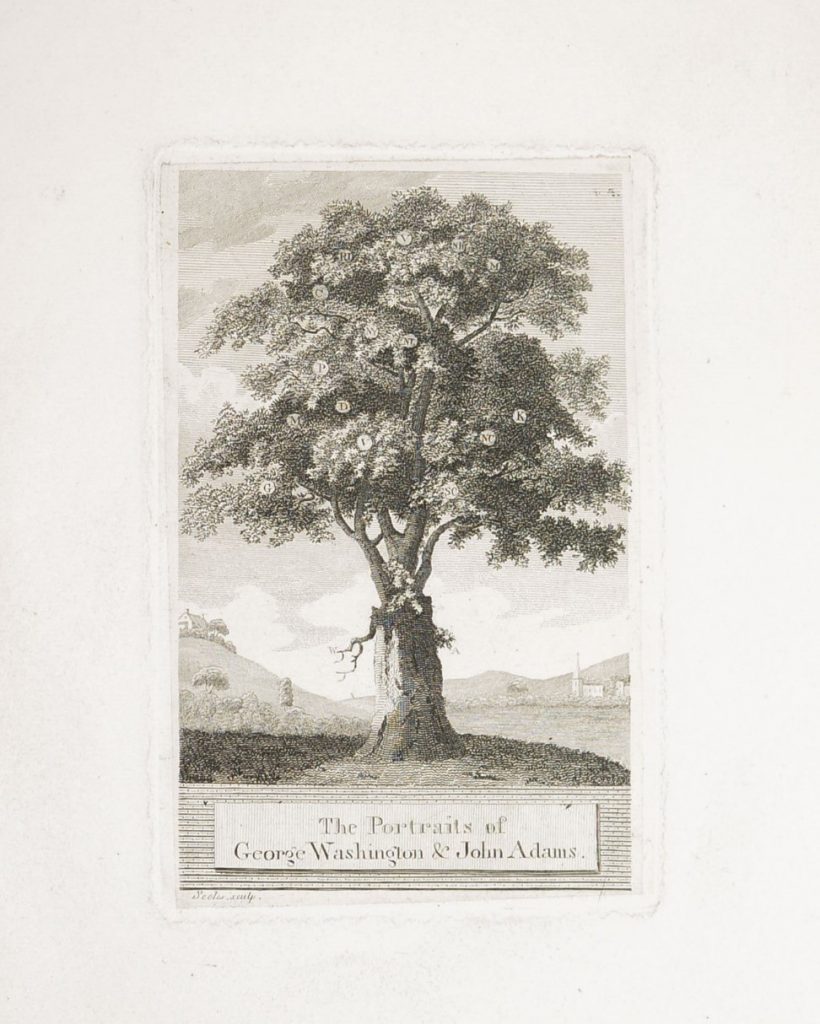
The next is a list of apple trees compiled by wainwright Isaac Howard in his account book. The volume is mostly a record of Howard’s work repairing and building wagons, but the last page is a list of the kinds of apples grown at the east end of, presumably, Howard’s property. It reads:
Names of Apple Trees begining [sic] at East end
No 1 D. Russet
2 Red Baldwin
3 Tower of Glemis
4 Jonathan
5 Spitzerbury
6 Porter
7 Golden Pippen
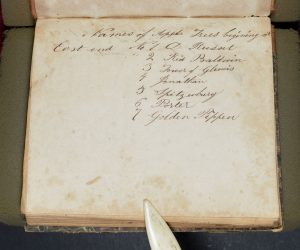
I only knew one of these apples and it made me wonder which varieties on this list are still around today. What would the taste like? Would they be good for eating or cooking? Or were they cider apples?
If Howard wanted to cook his apples (and if he could wait 80 years for its publication), he could turn to L. Gertrude Mackay’s Housekeeper’s apple book, a cookbook devoted to 197 recipes for apples. Distributed by the Advertising Committee of the International Apple Shippers’ Association, it is very pro-apple. It begins with two pages extolling the benefits of apples (They are easily prepared! You can save money by buying in bulk!) and then launches into the recipes. The dishes skew towards the sweet, but there are truly enough there to keep you fed for a whole day. Start your day with an Apple Omelet, make Stuffed Apples to Serve with Toast for lunch, serve Sausages and Fried Apples for dinner, and end your day with Apple Sherbet or Apple Taffy.
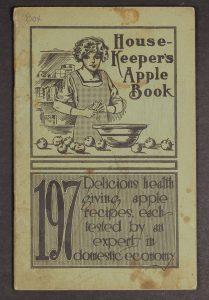
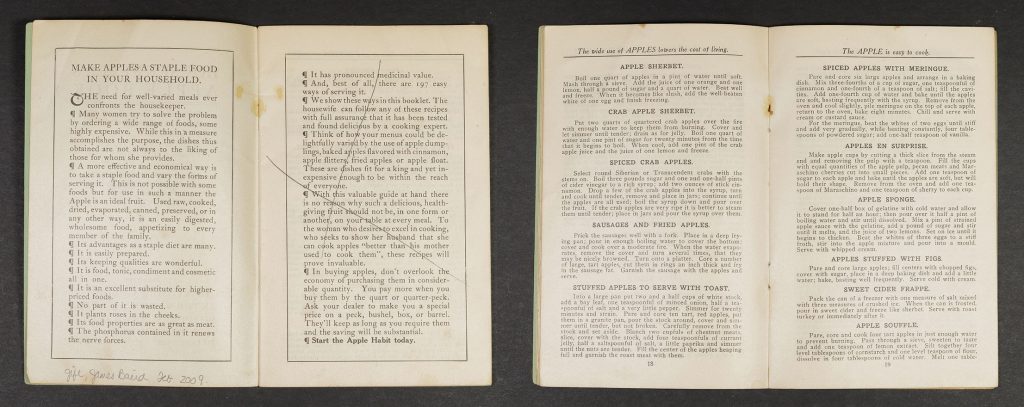
And if Howard didn’t want to cook his apples, he could always make cider. The MHS holds several manuals on making cider and accounts of making cider. There’s also this photograph of men working at Kendall’s Mills in Windham, New Hampshire in 1921.
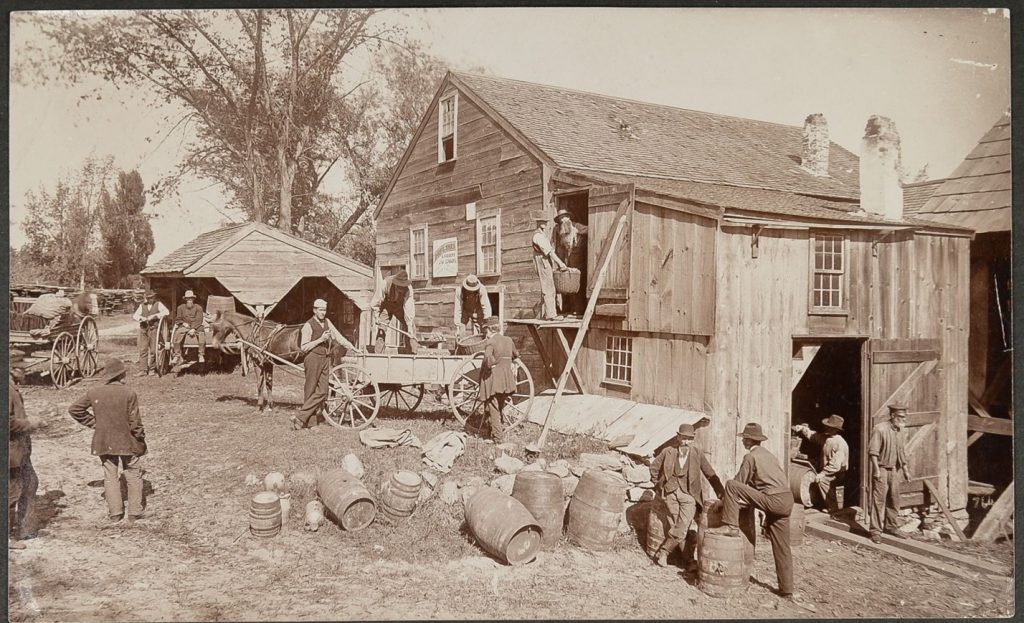
The last item to share is a portrait of a woman known as Apple Mary. An enigmatic figure, she apparently sold apples on the Boston Common some time in the 1870s. I tried to do a bit of quick research on her, but all I’ve turned up so far are similar portraits from other Boston archives. I hope to do more research on her and will report back if I find anything!
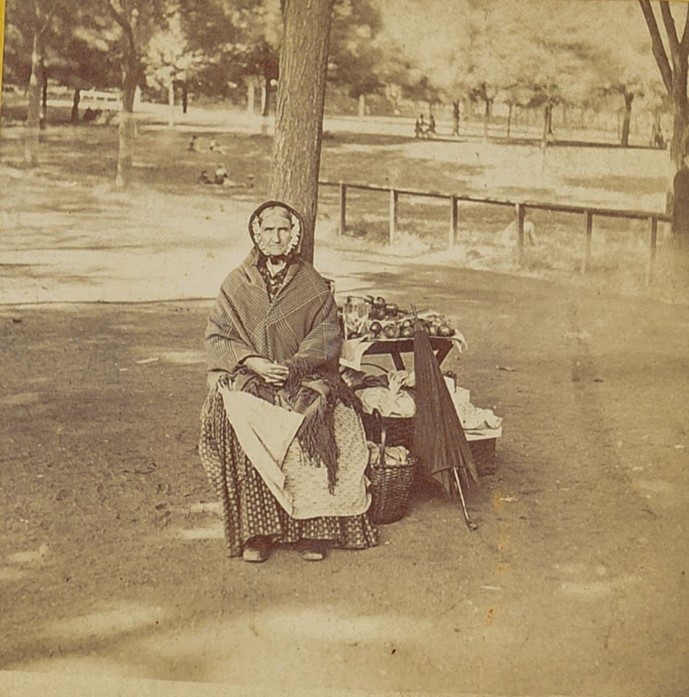
So, how about them apples? Have any of these objects caused interest to bloom or become the apple of your eye? I’m sure I’ve only just scratched the surface of our apple-related holdings, so please do schedule an appointment and come visit the library for more fruity findings of your own!
[1] Keith Stavely and Kathleen Fitzgerald, United Tastes: The Making of the First American Cookbook (University of Massachusetts Press, 2017).
[2] Alie Ward, interview with Susan K. Brown, Ologies, podcast audio, October 18, 2023, https://www.alieward.com/ologies/pomology.

